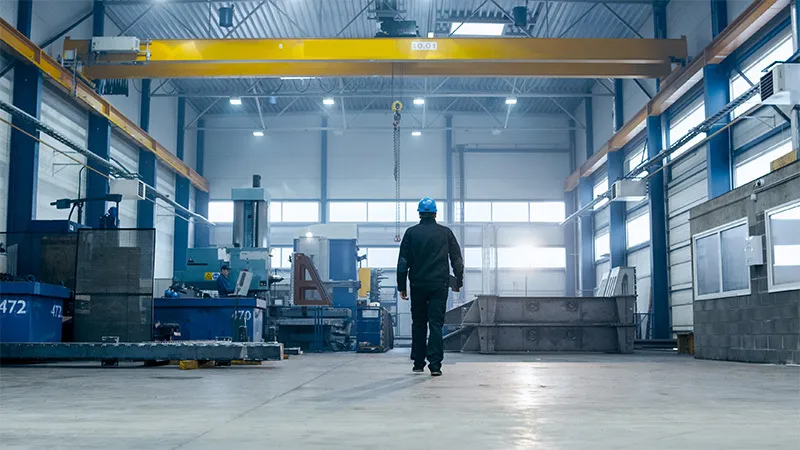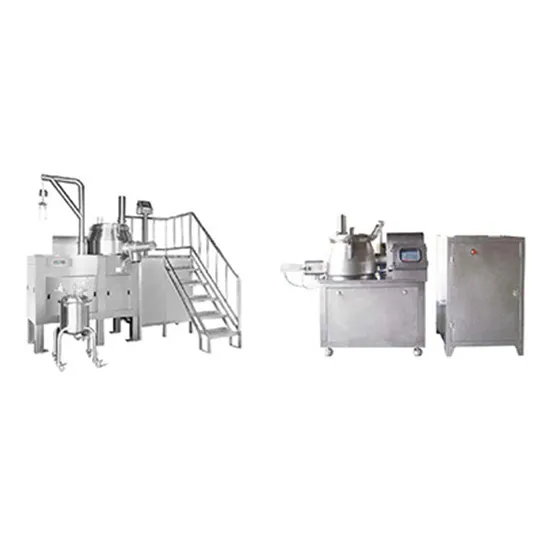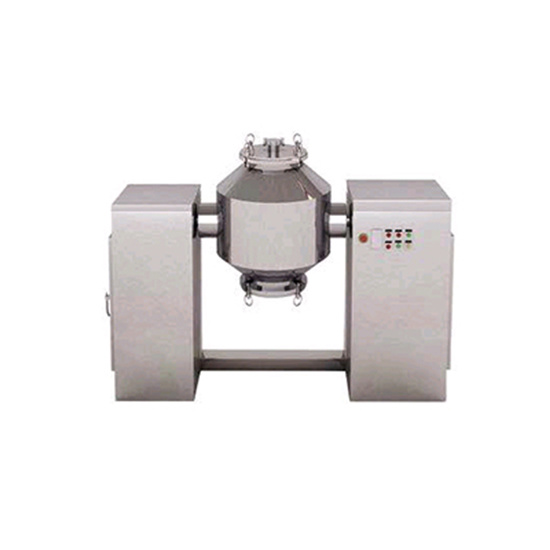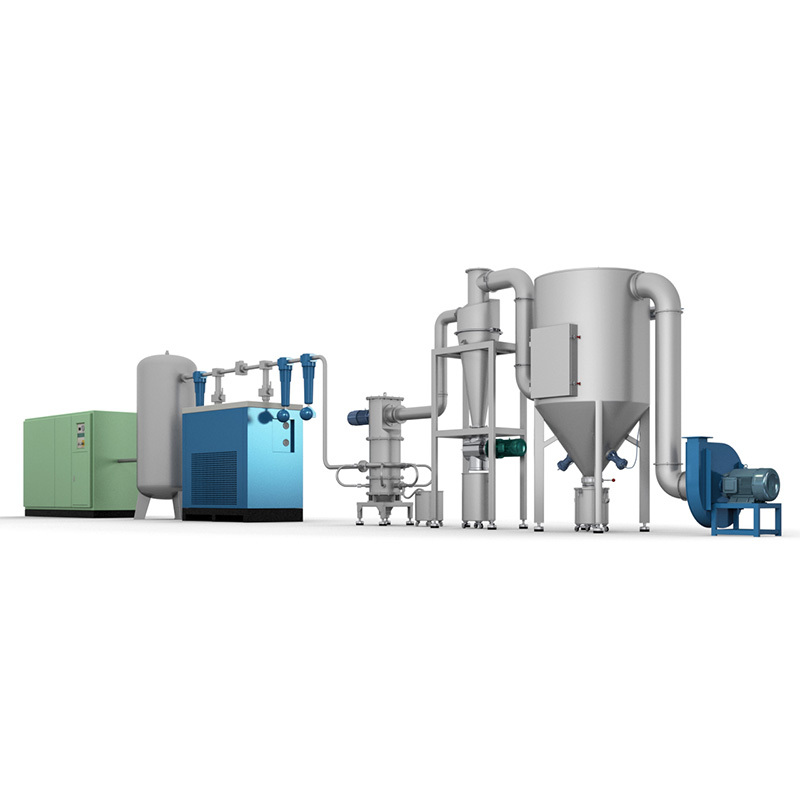NEWS
Sifting Through the Options: Choosing the Right Screening Machine for Your Business
Sep 21,2023
Table of Contents:
1. Introduction: Understanding the Importance of Choosing the Right Screening Machine
2. Factors to Consider When Choosing a Screening Machine
2.1 Capacity and Throughput
2.2 Particle Size and Shape
2.3 Material Type and Characteristics
2.4 Screening Efficiency
2.5 Maintenance and Operating Costs
2.6 Space and Installation Requirements
2.7 Noise and Environmental Considerations
2.8 Customization and Special Features
3. Types of Screening Machines
3.1 Vibrating Screens
3.2 Rotary Trommel Screens
3.3 Gyratory Screens
3.4 Inclined Screens
3.5 Static Screens
4. Frequently Asked Questions (FAQs)
4.1 What is the purpose of a screening machine?
4.2 How does a vibrating screen work?
4.3 Can a screening machine handle multiple materials?
4.4 What are the main maintenance requirements for screening machines?
4.5 How do I determine the appropriate screening capacity for my business?
4.6 Are there any environmental regulations to consider when choosing a screening machine?
4.7 Can a screening machine be customized to meet specific needs?
4.8 What are the advantages of a rotary trommel screen?
5. Conclusion
1. Introduction: Understanding the Importance of Choosing the Right Screening Machine
Choosing the right screening machine is crucial for businesses in various industries. Whether you are involved in mining, construction, recycling, or any other industry that requires the separation and classification of materials, a well-suited screening machine can significantly impact your operational efficiency and profitability.
2. Factors to Consider When Choosing a Screening Machine
2.1 Capacity and Throughput
One of the first considerations when selecting a screening machine is the required capacity and throughput. Determine the amount of material you need to process per hour or day, as this will help you identify the appropriate screening machine that can handle your desired volume.
2.2 Particle Size and Shape
Different materials have varying particle sizes and shapes. It is essential to choose a screening machine that can effectively separate and classify the particles based on their size and shape. Consider the range of particle sizes you need to process and ensure the machine can accommodate them.
2.3 Material Type and Characteristics
The type and characteristics of the material being screened are also critical factors to consider. Some materials may be abrasive, corrosive, sticky, or prone to blinding the screen. Ensure that the screening machine you choose is designed to handle the specific properties of your material.
2.4 Screening Efficiency
Screening efficiency is the ability of the machine to effectively separate the desired material from the unwanted particles. Look for a screening machine with high screening efficiency to maximize the quality and purity of the end product.
2.5 Maintenance and Operating Costs
Consider the maintenance and operating costs associated with the screening machine. Opt for a machine that is easy to maintain, with readily available spare parts. Additionally, choose a machine that offers energy efficiency to minimize operating costs.
2.6 Space and Installation Requirements
Evaluate the available space and installation requirements for the screening machine. Ensure that you have sufficient space for the machine and consider any specific installation requirements, such as power supply and ventilation.
2.7 Noise and Environmental Considerations
Take into account the noise levels generated by the screening machine and any environmental regulations in your area. Choose a machine that meets noise regulations and has features to minimize environmental impact, such as dust suppression systems.
2.8 Customization and Special Features
Depending on your specific needs, consider if the screening machine can be customized or if it offers any special features that can enhance its performance or efficiency. Customization options can include different screen sizes, deck configurations, and automation capabilities.
3. Types of Screening Machines
3.1 Vibrating Screens
Vibrating screens are versatile machines that use vibrations to separate and classify materials. They are commonly used in industries such as mining and construction. Vibrating screens can be designed with multiple decks to further enhance the screening process.
3.2 Rotary Trommel Screens
Rotary trommel screens consist of a cylindrical drum that rotates to separate materials based on size. They are highly efficient and commonly used in industries that require high throughput and precise particle separation, such as recycling and composting.
3.3 Gyratory Screens
Gyratory screens utilize gyratory motion to separate materials. They are suitable for handling large quantities of material and are commonly used in industries such as agriculture and 香蕉传媒 processing.
3.4 Inclined Screens
Inclined screens feature an inclined surface to facilitate the movement of materials. They are effective for screening materials with high moisture content or when the angle of separation needs to be adjusted.
3.5 Static Screens
Static screens are stationary machines that use gravity or mechanical means to separate materials. They are often used for preliminary screening and are commonly found in industries such as aggregates and mining.
4. Frequently Asked Questions (FAQs)
4.1 What is the purpose of a screening machine?
A screening machine is used to separate and classify materials based on their size, shape, and other characteristics. It helps businesses achieve efficient material handling, improve product quality, and increase overall productivity.
4.2 How does a vibrating screen work?
A vibrating screen consists of a screen mesh supported by springs that vibrate to separate the material. The vibrating motion allows smaller particles to pass through the screen while larger particles are retained.
4.3 Can a screening machine handle multiple materials?
Yes, many screening machines can handle multiple materials. However, it is essential to consider the specific requirements and characteristics of each material to ensure optimal performance.
4.4 What are the main maintenance requirements for screening machines?
Maintenance requirements may vary depending on the type of screening machine. However, common maintenance tasks include regular inspection of screens, lubrication of bearings, and cleaning of components.
4.5 How do I determine the appropriate screening capacity for my business?
To determine the appropriate screening capacity, consider the production requirements and the desired throughput per hour or day. Consult with experts or manufacturers to ensure accurate capacity calculations.
4.6 Are there any environmental regulations to consider when choosing a screening machine?
Yes, there may be environmental regulations regarding noise levels, emissions, and dust control. Ensure that the screening machine you choose complies with these regulations to avoid potential fines or penalties.
4.7 Can a screening machine be customized to meet specific needs?
Yes, many screening machines offer customization options to meet specific needs. This can include different screen sizes, deck configurations, and additional features such as automated controls.
4.8 What are the advantages of a rotary trommel screen?
Rotary trommel screens offer several advantages, including high throughput, precise particle separation, and the ability to handle various materials. They are particularly suitable for applications that require efficient and reliable screening.
5. Conclusion
Choosing the right screening machine for your business is a critical decision that can impact your operational efficiency and overall success. Consider factors such as capacity, particle size, material characteristics, screening efficiency, maintenance costs, and special features. By carefully evaluating your needs and selecting the most suitable screening machine, you can ensure optimal performance and maximize your business's productivity.
1. Introduction: Understanding the Importance of Choosing the Right Screening Machine
2. Factors to Consider When Choosing a Screening Machine
2.1 Capacity and Throughput
2.2 Particle Size and Shape
2.3 Material Type and Characteristics
2.4 Screening Efficiency
2.5 Maintenance and Operating Costs
2.6 Space and Installation Requirements
2.7 Noise and Environmental Considerations
2.8 Customization and Special Features
3. Types of Screening Machines
3.1 Vibrating Screens
3.2 Rotary Trommel Screens
3.3 Gyratory Screens
3.4 Inclined Screens
3.5 Static Screens
4. Frequently Asked Questions (FAQs)
4.1 What is the purpose of a screening machine?
4.2 How does a vibrating screen work?
4.3 Can a screening machine handle multiple materials?
4.4 What are the main maintenance requirements for screening machines?
4.5 How do I determine the appropriate screening capacity for my business?
4.6 Are there any environmental regulations to consider when choosing a screening machine?
4.7 Can a screening machine be customized to meet specific needs?
4.8 What are the advantages of a rotary trommel screen?
5. Conclusion
1. Introduction: Understanding the Importance of Choosing the Right Screening Machine
Choosing the right screening machine is crucial for businesses in various industries. Whether you are involved in mining, construction, recycling, or any other industry that requires the separation and classification of materials, a well-suited screening machine can significantly impact your operational efficiency and profitability.
2. Factors to Consider When Choosing a Screening Machine
2.1 Capacity and Throughput
One of the first considerations when selecting a screening machine is the required capacity and throughput. Determine the amount of material you need to process per hour or day, as this will help you identify the appropriate screening machine that can handle your desired volume.
2.2 Particle Size and Shape
Different materials have varying particle sizes and shapes. It is essential to choose a screening machine that can effectively separate and classify the particles based on their size and shape. Consider the range of particle sizes you need to process and ensure the machine can accommodate them.
2.3 Material Type and Characteristics
The type and characteristics of the material being screened are also critical factors to consider. Some materials may be abrasive, corrosive, sticky, or prone to blinding the screen. Ensure that the screening machine you choose is designed to handle the specific properties of your material.
2.4 Screening Efficiency
Screening efficiency is the ability of the machine to effectively separate the desired material from the unwanted particles. Look for a screening machine with high screening efficiency to maximize the quality and purity of the end product.
2.5 Maintenance and Operating Costs
Consider the maintenance and operating costs associated with the screening machine. Opt for a machine that is easy to maintain, with readily available spare parts. Additionally, choose a machine that offers energy efficiency to minimize operating costs.
2.6 Space and Installation Requirements
Evaluate the available space and installation requirements for the screening machine. Ensure that you have sufficient space for the machine and consider any specific installation requirements, such as power supply and ventilation.
2.7 Noise and Environmental Considerations
Take into account the noise levels generated by the screening machine and any environmental regulations in your area. Choose a machine that meets noise regulations and has features to minimize environmental impact, such as dust suppression systems.
2.8 Customization and Special Features
Depending on your specific needs, consider if the screening machine can be customized or if it offers any special features that can enhance its performance or efficiency. Customization options can include different screen sizes, deck configurations, and automation capabilities.
3. Types of Screening Machines
3.1 Vibrating Screens
Vibrating screens are versatile machines that use vibrations to separate and classify materials. They are commonly used in industries such as mining and construction. Vibrating screens can be designed with multiple decks to further enhance the screening process.
3.2 Rotary Trommel Screens
Rotary trommel screens consist of a cylindrical drum that rotates to separate materials based on size. They are highly efficient and commonly used in industries that require high throughput and precise particle separation, such as recycling and composting.
3.3 Gyratory Screens
Gyratory screens utilize gyratory motion to separate materials. They are suitable for handling large quantities of material and are commonly used in industries such as agriculture and 香蕉传媒 processing.
3.4 Inclined Screens
Inclined screens feature an inclined surface to facilitate the movement of materials. They are effective for screening materials with high moisture content or when the angle of separation needs to be adjusted.
3.5 Static Screens
Static screens are stationary machines that use gravity or mechanical means to separate materials. They are often used for preliminary screening and are commonly found in industries such as aggregates and mining.
4. Frequently Asked Questions (FAQs)
4.1 What is the purpose of a screening machine?
A screening machine is used to separate and classify materials based on their size, shape, and other characteristics. It helps businesses achieve efficient material handling, improve product quality, and increase overall productivity.
4.2 How does a vibrating screen work?
A vibrating screen consists of a screen mesh supported by springs that vibrate to separate the material. The vibrating motion allows smaller particles to pass through the screen while larger particles are retained.
4.3 Can a screening machine handle multiple materials?
Yes, many screening machines can handle multiple materials. However, it is essential to consider the specific requirements and characteristics of each material to ensure optimal performance.
4.4 What are the main maintenance requirements for screening machines?
Maintenance requirements may vary depending on the type of screening machine. However, common maintenance tasks include regular inspection of screens, lubrication of bearings, and cleaning of components.
4.5 How do I determine the appropriate screening capacity for my business?
To determine the appropriate screening capacity, consider the production requirements and the desired throughput per hour or day. Consult with experts or manufacturers to ensure accurate capacity calculations.
4.6 Are there any environmental regulations to consider when choosing a screening machine?
Yes, there may be environmental regulations regarding noise levels, emissions, and dust control. Ensure that the screening machine you choose complies with these regulations to avoid potential fines or penalties.
4.7 Can a screening machine be customized to meet specific needs?
Yes, many screening machines offer customization options to meet specific needs. This can include different screen sizes, deck configurations, and additional features such as automated controls.
4.8 What are the advantages of a rotary trommel screen?
Rotary trommel screens offer several advantages, including high throughput, precise particle separation, and the ability to handle various materials. They are particularly suitable for applications that require efficient and reliable screening.
5. Conclusion
Choosing the right screening machine for your business is a critical decision that can impact your operational efficiency and overall success. Consider factors such as capacity, particle size, material characteristics, screening efficiency, maintenance costs, and special features. By carefully evaluating your needs and selecting the most suitable screening machine, you can ensure optimal performance and maximize your business's productivity.
More News










